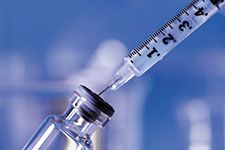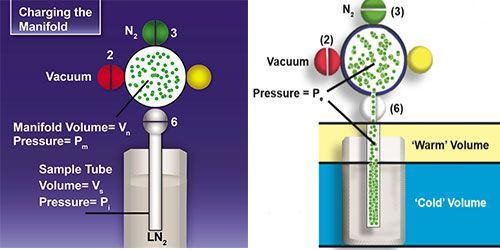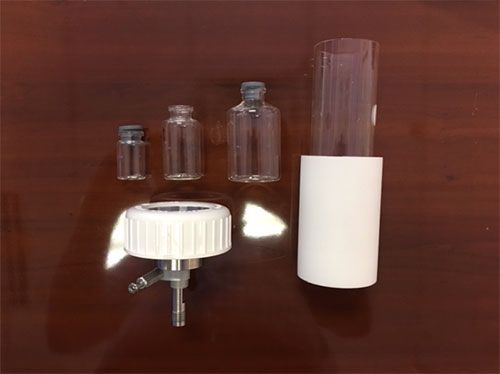Using Nondestructive in-situ Measurements to Ensure Lyophilized Product Stability
Non-destructive surface area measurement can improve stability testing.
R. Gino Santa Maria/stock.adobe.com

Lyophilization, or freeze drying, is a vital process for the pharmaceutical industry and is used widely to extend the shelf-life of injectables. Many biological molecules, including a significant number of important commercial therapies, are labile in solution but can be stabilized through the removal of water.
Stability is of the utmost importance because lyophilized products, typically small cakes of material, must maintain integrity throughout their intended shelf life. The cakes’ physical properties, such as surface area, directly influence stability and thus, clinical efficacy, and may consequently be critical quality attributes (CQAs) for the product.
Beyond this, such properties are routinely measured because of their impact on process efficiency and the behavior of the product during reconstitution. This article examines surface area measurement, used to determine stability, and highlights technology designed to enable reproducible, relevant in-situ measurement.
The relevance of surface area
Stability is the primary concern for a lyophilized product, with reconstitution behavior an important but secondary issue. For ease of administration, manufacturers aim for a cake that can be reconstituted in approximately 10 to 30 minutes, using minimal volumes of solvent. Complete dissolution of the drug is critical to its clinical efficacy, because in-line filtration will remove any undissolved drug.
With respect to process optimization, lyophilization is a lengthy, time-consuming process, associated with low energy efficiency. There is considerable pressure on biopharmaceutical manufacturers to boost drying efficiency, particularly for the primary drying step, and to reduce lyophilization cycle times, within the constraint of consistently and reliably reaching an acceptable moisture level.
The surface area that the cake develops is primarily defined by the conditions applied during freezing, with rate and temperature influencing the size of ice crystals formed. Sublimation in the primary drying stage removes most of the water, leaving behind a honeycombed structure with physical characteristics such as surface area determined by the size of the ice crystals. However, secondary drying, the removal of bound or adsorbed water at more elevated temperature, can also affect the structure and surface area of the finished cake, depending on the conditions applied.
The surface area that develops affects both the lyophilization process itself and the performance of the finished cake, and helps determine:
- Progress of the sublimation front through the evolving cake and the efficiency of both primary and secondary drying
- Drug stability, for example, by altering the probability of active molecules exposed to the cake-air interface
- The rate and ease of reconstitution, by defining the contact area between solvent and the dried formulation.
- These competing factors make surface area optimization a unique challenge for each lyophilized formulation and create an ongoing requirement for more reliable measurement method.
Traditional methods
Surface area is usually determined by gas adsorption measurements, as described in United States Pharmacopeia (USP) Chapter <846> (1). In simple terms, this involves measuring the amount of gas adsorbed by the sample as a function of pressure, at a controlled temperature. These measurements enable the generation of an isotherm, from which surface area is determined using classical Brunauer, Emmett and Teller (BET) theory (2). Figure 1 shows a standardized apparatus for such measurements.
Figure 1: Operating principles of a traditional gas adsorption apparatus for determination of the surface area of lyophilized product cakes: Charging of the manifold (left) and sample dosing and pressure equilibration (right). [Figures courtesy of the author].

An adsorption measurement usually begins by degassing or outgassing of the sample, to remove adsorbed gases and ensure reproducible measurement. This is typically achieved through the application of a vacuum, at ambient or slightly elevated temperature.
The sample tube is then isolated from the manifold and submerged in a cold bath containing liquid nitrogen (LN2). Charging the manifold to a certain pressure admits a quantity of gas that can be calculated from the gas law, and the manifold is then opened up to the sample to allow gas adsorption (see Figure 1).
Once pressure has equilibrated, the amount of gas adsorbed can be calculated by determining the difference between the two values, again through application of the gas law. Further measurements are made by repeating this procedure at progressively higher pressures to generate a complete quantity of gas adsorbed versus pressure isotherm.
For lyophilized cakes, the crucial limitation of traditional apparatus is the sample cell design and the associated requirement for sampling. Standard sample tubes have an opening of 7–10 mm and may either be straight walled or a have a triangular flattened base to aid stability. All such tubes necessitate sampling of the cake, which typically involves its (partial) destruction. This introduces concerns as to how representative the data are, particularly when assessed within the context of why measurements are being made. Any sampling alters the cake’s morphology and compromises structural integrity, potentially changing surface area in an unknown and uncontrolled way.
A switch to alternative sample tubes is complicated by the requirement to maintain a precisely controlled cold volume. Maintaining a constant liquid nitrogen level during measurement is critical for defining temperature regions in the apparatus. These regions are used in the gas law calculations, and consequently the accuracy of the resulting data. All modern gas adsorption systems address this issue, but some solutions are inextricably associated with the geometry of standard sample tubes, providing little or no flexibility to change designs.
The benefits of in-situ measurement
Measuring the entire cake, in-situ, within the vial, eliminates any requirement for sampling, maximizing the relevance of the resulting information. This approach offers reassurance that data are obtained under precisely the conditions of interest with respect to stability and reconstitution behavior and reduces the variability associated with sampling and cake damage. From a practical perspective, in-situmeasurement is also a simpler option that requires less manual effort for each measurement.
To load the sample, the top is taken off the vial, which is then placed directly in the sample tube (see Figure 2). The lyophilization process seals the cake under closely controlled conditions precluding the requirement for initial degassing; krypton is the preferred adsorptive, as per USP <846>, because the surface area of lyophilized cakes tends to be low.
Figure 2: New accessories accommodating industry standard lyophilization vials enable in-situ gas adsorption measurements.

With these tubes, the liquid level of nitrogen is kept constant using an isothermal jacket made specifically to accommodate their larger diameter. This porous jacket is approximately 2–3 mm thick and acts as a wick for the liquid nitrogen in the flask reservoir, holding it against the sample tube to maintain a constant temperature profile for the duration of the analysis. This design is well established for smaller sample tubes and has been proven to lead to highly reproducible measurement. Measurement is otherwise directly analogous to the standard technique except for the determination of sample mass, which is carried out post- rather than pre-measurement.
By providing access to more relevant surface area information, new accessories for in-situ gas adsorption measurements support the more efficient application of lyophilization. Measurements that correlate robustly with progress of the sublimation front during the critical primary drying step aid efforts toward knowledge-based process optimization and more secure scale-up. In-situ testing of the finished product, on the other hand, provides detailed insight into stability and reconstitution behavior that is inaccessible via surface area and particle sizing techniques that require sampling.
References
1. USP, General Chapter <846> Specific Surface Area, USP–NF.
2. S. Brunauer, P.H. Emmett, E. Teller, J.Am. Chem. Soc., 60 (1938) 309-319
About the Author
Jeff Kenvin is chief scientific officer at Micromeritics.
Article Details
Pharmaceutical Technology
Vol. 42, No. 10
October 2018
Pages: 44, 45, 79
Citation
When referring to this article, please cite it as J. Kenvin, “Using Nondestructive in-situ Measurements to Ensure Lyophilized Product Stability," Pharmaceutical Technology 42 (10) 2018.

Drug Solutions Podcast: A Closer Look at mRNA in Oncology and Vaccines
April 30th 2024In this episode fo the Drug Solutions Podcast, etherna’s vice-president of Technology and Innovation, Stefaan De Koker, discusses the merits and challenges of using mRNA as the foundation for therapeutics in oncology as well as for vaccines.